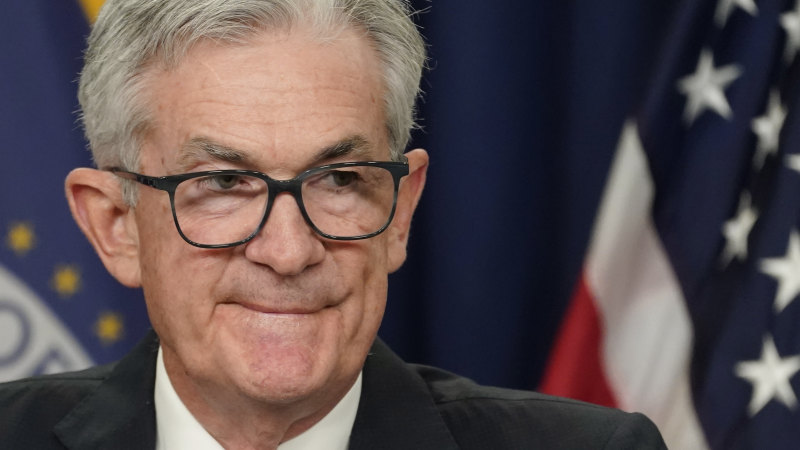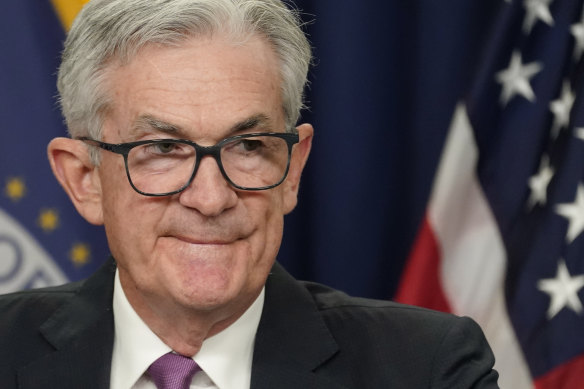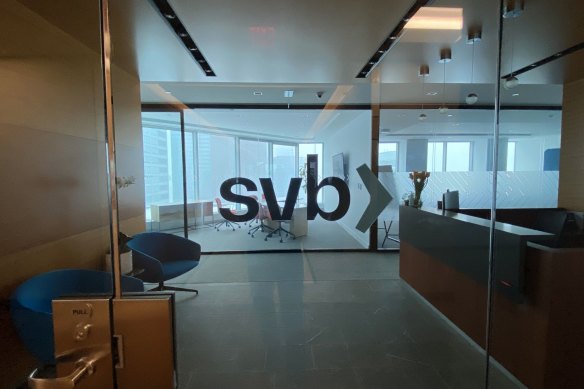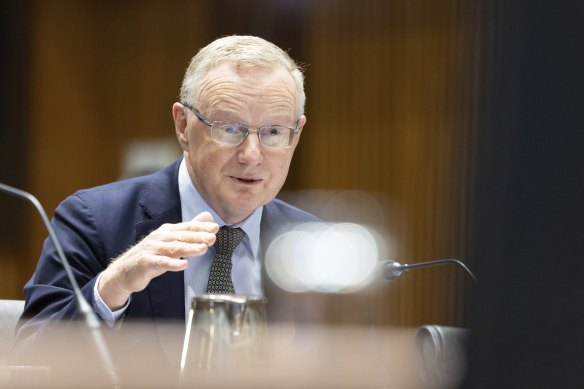Blind spot: The Fed has no-one to blame but itself for the mess it is in
The US Federal Reserve Board now confronts several dilemmas of its own making; dilemmas with implications not just within the US but for financial regulators and economic policymakers elsewhere.
The most obvious fallout from the collapse of the Silicon Valley Bank and Signature banks and the Fed’s responses to those failures is that its monetary policies are now in direct conflict with its mandate to ensure financial stability.
The interest rates puzzle just got a lot more complicated for Jerome Powell and the rest of the Fed board.Credit:AP
Less obvious, but of longer term and wider consequence, is that the measures it has taken to contain the systemic impacts of the bank failures have created a cloud of moral hazard over the US banking system and undermined the measures put in place after the 2008 financial crisis that sought to limit taxpayers’ exposure to bank failures.
It might appear peculiar that problems within two relatively small banks, not regarded or regulated as systemically important institutions, could have implications for the monetary policies of the US and other economies or challenge the assumption that the post-GFC blizzard of bank regulations would quarantine financial systems and protect taxpayers from the failure of an individual bank. Even those previously deemed “too big to fail.”
The Fed’s response – and other central banks’ responses – to soaring inflation rates has, however, revealed a major blind spot within the safeguards supposedly erected after the 2008 crisis.
Those measures were designed for the type of credit quality and/or liquidity crises experienced in 2008 and in other recent episodes like the 2000 “dot com” bubble’s bursting or the freezing of the US system in 2020 at the onset of the pandemic. They didn’t anticipate an interest rate-driven crisis created by central bankers.
That is effectively what has occurred within SVB, which was blown up by a massive mismatch between the duration and liquidity of its liabilities and assets.
It had lots of large short-term deposits from its predominantly tech company customers with a $US200 billion ($300 billion) balance sheet – about $US157 billion of its $US175 billion of deposits were above the $US250,000 cap for insured deposits — a relatively small proportion of loans and about $US120 billion of investments in long-dated mortgage securities and government bonds, supposedly the safest assets in the investment universe.
Leave aside the recklessness reflected in the way the SVB balance sheet was constructed and managed and what you see is a bank nakedly exposed to interest rate risk.
As rates rose, the market value of the mortgage-backed securities and bonds would inevitably fall, as it did. SVB hadn’t hedged its interest rate exposure, as any sensibly-managed bank would do, so paper and ultimately real losses mounted and ultimately sparked the run which condemned the bank.
The collapse of Silicon Valley Bank has shaken up the US banking system. Credit:Bloomberg
Why was the failure of a bank deemed of no systemic significance – with assets of just over $US200 billion it wasn’t subject to the rigorous surveillance, capital and liquidity requirements and stress testing for banks with assets of more than $US250 billion – deemed so threatening that it caused the Fed to act immediately and so decisively to avoid contagion?
The Fed and other regulators have effectively guaranteed that all SVB and Signature depositors, even those with unsecured deposits way above the $US250,000 cap, will be repaid in full. In other words, these two relatively obscure banks were deemed too big to fail.
The fear, obviously, was that the prospects of losses above the $US250,000 in those banks would trigger – and indeed was triggering – runs by depositors with uninsured deposits at other banks. It turns out SVB and Signature were of systemic importance after all.
The Fed’s rescue package for the two failed banks provided a guarantee of all deposits, with any losses on the amounts above the insured cap covered by a levy on US banks generally.
While there is no taxpayer money directly at risk, if the banks are called on it would mean the losses would be socialised among all bank depositors and shareholders.
Having taken this fateful step to avoid contagion, the Fed has effectively told – and wanted to tell – all depositors that their deposits are insured, regardless of their size. The cap is meaningless. (Australia has a similar deposit guarantee with a cap of $250,000).
That action by the Fed creates moral hazard. Bank depositors now know that, if they take on excessive risk pursuing higher returns, the Fed will underwrite any prospective losses.
The other measure the Fed took was to create a new term funding facility for the banking sector, under which it would make loans secured by the banks’ holdings of high-quality bonds.
It would accept that collateral at par – at the face value of the bonds – while charging them a 10 basis point margin over the 12-month overnight index swap rate, or about five per cent, if they access what is currently planned as a $US25 billion facility.
That was designed to avoid liquidity crunches in banks experiencing a run and says the Fed is seeing stress within the US financial system.
By accepting the collateral at par rather than at a discount to their face value as it would normally do, however, the Fed is also allowing the banks to raise cash at levels well above the market value of the securities while taking the interest rate risk and the paper losses onto its own balance sheet.
That reflects a massive problem of the Fed’s own making. It has raised US interest rates by 450 basis points in 12 months and in the process devalued existing holdings of US government securities. As interest rates have risen the value of those bonds has fallen to reflect the risen in market yields. Bond prices fall as yields rise.
That’s not a major issue if the bonds are being held to maturity but generates paper losses if they are “marked to market” and real losses, as SVB experienced, if the bonds have to be sold.
There are an estimated $US600 billion-plus of paper losses in the US system, about half them attributable to bonds the banks plan to hold to maturity, so the Fed is effectively sheltering the banks from incurring losses by having to liquidate their holdings to meet a run in their deposit bases.
Separate to the other layer of moral hazard that generates is that it effectively eases financial conditions by adding a new source of liquidity to the system.
Until this week the Fed had been tightening financial conditions, raising rates aggressively and allowing $US95 billion a month of the bonds and other securities it bought during the worst of the pandemic to mature without investing the proceeds in a process known as “quantitative tightening.”
Until this week there was an expectation, fuelled by last week’s comments by the Fed’s chairman, Jerome Powell, that indicated that the bank might raise rates faster and higher than financial markets had previously anticipated.
Other central bankers will consider that invidious position as they see ripples from the events in the US over the past few days in their own systems.
Those comments led to a big spike in US bond yields that may have been the factor that tipped SVB over the edge.
The Fed’s Open Market Committee, which determines US interest rates, meets next week and was expected to raise rates by another 50 basis points in response to the stubbornly high inflation.
Bond yields fell sharply on Monday, with the yield on 12-month notes down 69 basis points and the yields on two-year notes down 54 basis points and 10-year bonds by13 basis points.
That signals a market expectation that either the Fed will pause the rate-hiking cycle to allow the stresses generated by the bank collapses to subside or, at worst, will announce a 25 basis point increase.
RBA governor Phil Lowe will be watching the Fed’s next moves with great interest.Credit:Alex Ellinghausen
Thus the Fed, which generated the massive paper (and some real) losses on government securities by raising US rates so aggressively in such a short time frame, is bound up in a dilemma it created.
Does it risk adding to the stresses within the banking system by prioritising inflation or does it risk entrenching high inflation rates by prioritising financial stability?
Other central bankers will consider that invidious position as they see ripples from the events in the US over the past few days in their own systems.
They (and this includes the Reserve Bank) will also think about the implications of the Fed’s actions for the post-2008 prudential policies that every developed banking system adopted, and they’ll look even harder at the interest rate risks within their own systems.
The Market Recap newsletter is a wrap of the day’s trading. Get it each weekday afternoon.
Most Viewed in Business
From our partners
Source: Read Full Article




